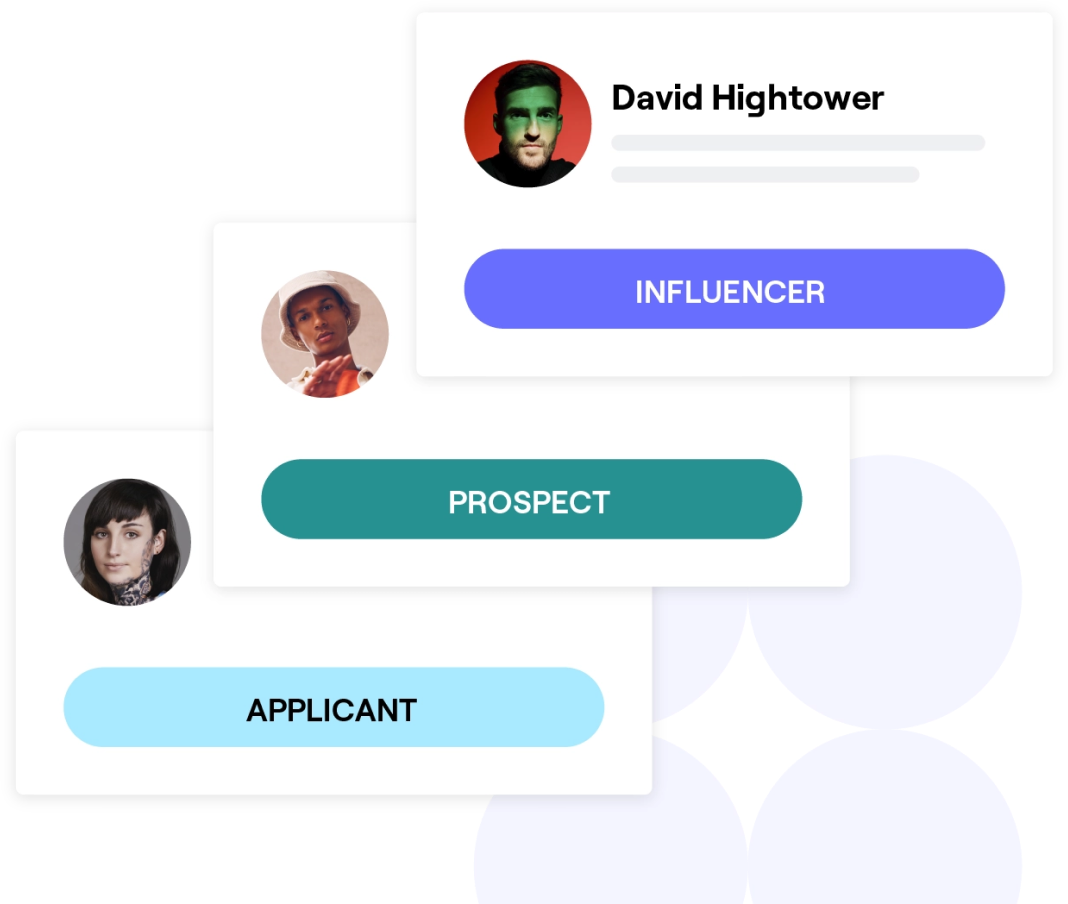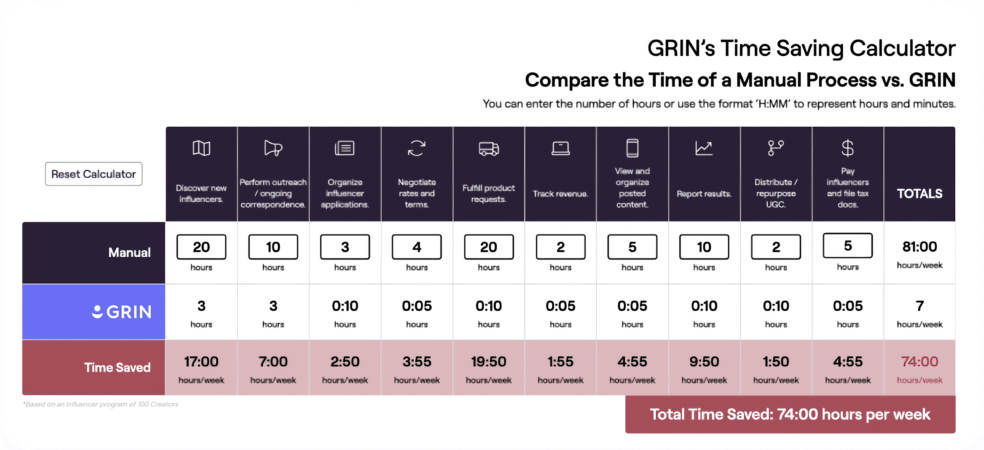With new startups popping up every other day, a major challenge they face is competition. Not only do they have to stand out from the other startups in the field, but they also have to compete against big, well-established brands.
It may seem like any marketing techniques worth pursuing at this point would be expensive and out-of-reach, but that’s where you’re wrong.
Strategic businesses can leverage influencer marketing for startups to harness amazing results on a budget. Here’s how.
What makes startups unique?
Because startups are new and generally small, they typically don’t have much brand awareness. However, unlike small businesses, startups intend to grow rapidly and tend to have a decent amount of investment capital for marketing efforts to help achieve this.
Why does influencer marketing for startups work?
In order to make your startup grow, you need to attract people, engage them, and convert them into loyal customers. And the best way to acquire new customers is to leverage startup influencer marketing.
Content creators have large audiences who trust them, so when they talk about your startup, they can get people to trust you. You can drive the best results through cost-effective startup influencer marketing campaigns by partnering with nano and micro influencers.
In fact, you can also boost the conversion rates of your ads by repurposing creator content (with permission) or even running ads from a creator’s social account (known as creator licensing).
Startup influencer marketing has helped many new businesses reach and engage their target audiences effectively. That’s why startups are increasingly focusing on creator collaborations.

8 tips to help your startup get the most from influencer marketing
Identify the right influencers.
Influencer marketing can help boost your startup’s visibility, reach, engagement, and overall growth. The first step towards this is finding creators ideal for your industry.
While there are several paid tools on the market, you may not have the budget if you’re just starting out. But there are plenty of free options out there too! GRIN offers a free Web Extension that you can use while searching social platforms, including Instagram, TikTok, YouTube, and Pinterest. Once you find a creator that looks interesting, open the Extension and instantly access metrics like engagement rate, follower count, and more.
When searching for influencers, your first priorities should be relevance and engagement, so avoid focusing only on their follower counts. Instead of reaching a mass audience that may or may not be interested in your message, you should try to reach a small but engaged and relevant audience.
Encourage creativity.
People trust influencers for their authenticity and expertise. A majority of influencers spend a great deal of time crafting strong posts that will resonate with their audiences. This includes everything from ideation to creation and publication.
You should understand that influencers know their audiences best. In order to drive the best results from your startup influencer marketing campaigns, you should provide influencers with creative freedom. They have a unique talent for making brands fit naturally into their posts.
However, it is still essential to provide them with a thorough campaign brief that covers things like post types, brand assets, and more. Giving them these resources can help set them up for success.
Start small.
For a startup, it is best to work with nano and micro influencers who have a niche and loyal following rather than trying to partner with big celebrities.
A nano influencer has between 1,000 and 10,000 followers, while micro influencers have between 10,000 and 100,000. While they don’t have the same reach as macro and celebrity influencers, they tend to have higher engagement rates, which means that more people are taking the time to like, comment on, and share their posts.
Since these smaller creators have more targeted audiences, they help you reach more specific audiences with your startup influencer marketing campaigns.
A study by Experticity showed that micro influencers are engaged in 22% more buying conversations (offering product recommendations and answering questions) than any other type of creator. In fact, the same study found that 82% of people are highly likely to follow the recommendations of a micro influencer.
This is possible because smaller creators can develop personal connections by engaging with their audience, which does not happen with macro influencers with much larger audiences. Not just that, nano and micro influencers tend to have lower rates than macro influencers, which is good news for your budget.
Try guest posting.
Influential bloggers are always on the lookout for fresh content to keep their audiences engaged. Since it’s not always easy to consistently produce new, quality content, some may also accept guest posts.
As a startup, you can reach out to bloggers in your niche and offer to write for them. This will help you develop a personal relationship with the creator.
This can also help boost your website’s search engine optimization (SEO). One of the major ranking factors for most search engines is the number of links to your website from other high-quality sites. By guest posting on authoritative blogs, you can potentially boost your rankings on Google and other search engines.
Offer free products in exchange for reviews.
Startups generally have tight budgets and look for cost-effective ways to market their products. That’s why startup influencer marketing fits the bill.
If you can’t provide monetary compensation to your influencers, look for those who will accept free products. These will typically be creators with smaller followings. Essentially, you’ll provide free items or services, and they will post about their experience.
However, not every influencer would be keen on this type of partnership, so make sure you thoroughly discuss the deal beforehand.
Launch social media takeovers.
Hosting a social media takeover is a popular tactic in influencer marketing, and startups can use these to promote their brands through a creator’s voice. By operating and posting on behalf of the brand, creators can garner their followers’ attention and thus increase brand reach and awareness.
If you are wondering how, check out this example:
The Las Vegas Convention and Visitors Authority used DJ Khaled (“the king of Snapchat”) to launch their Visit Las Vegas channel on Snapchat, and the results were impressive. Within two days, the channel had 400,000 + views and 25,000 interactions.
Right now @djkhaled is snapping his ride on a gondola @VenetianVegas 🔑 It’s going down on Snapchat 👻: VisitLasVegas pic.twitter.com/GMkY2mvuaG
— Vegas (@Vegas) May 30, 2016
Hold contests & giveaways.
There’s nothing people love more than getting free stuff, and social media giveaways can generate a ton of awareness, engagement, and follower growth for your brand and the creator.
One of the most popular ways to host these is to have the creator post about it and set some ground rules for entering the contest, typically following both the creator and the brand on the social platform and tagging a certain number of friends in the comments.
Don’t forget about affiliate marketing.
Affiliate marketing is essentially the process of bringing creators on as commissioned salespeople for your brand. Startups can join in on this by partnering with creators, supplying them with a unique discount code or affiliate link, and paying them commissions for the sales they help bring in.
This is a great option for testing different creators as you get started since you only pay them when they help you earn sales. Plus, when they have a financial stake in the amount they sell, they may post about your startup more frequently.
A startup’s guide to Instagram influencer pricing & TikTok rates
What are my options for paying influencers?
There are three main methods for compensating creators:
- Free products/services: This involves sending free items to a creator or inviting them to try your service for free. Most businesses include this as one form of payment since the creator needs to be able to post about their experience.
- Commission: Startups can participate in affiliate marketing by providing each of their creators with a unique discount code or affiliate link that tracks sales. Before beginning this type of collaboration, brands and creators will negotiate how much commission they will earn from each sale.
- Flat fees: This payment method involves negotiating with the creator to determine a set fee for each post they produce. This tends to be the preferred type of compensation for more established creators.
Most brands use a combination of free products and either commission or flat fees, and sometimes brands will offer all three.
How much do influencers charge?
There is no set rate for creators, and these amounts will vary from person to person. However, many creators are open to negotiation, so if you find a creator you want to work with but their rates are too high, consider offering them a lower flat fee in addition to commission. Or ask for a lower flat fee and give them more free products or access to creator-exclusive perks.
What factors affect an influencer’s rate?
In general, the more followers a creator has, the more they are likely to charge for a collaboration. The same can also be true for engagement rates.
Other factors that can influence a creator’s rate are:
- The type of content: Long-form videos and blog posts take longer to create than static images. The more time it takes to craft a deliverable, the more expensive it will be.
- The demand for the creator: Creators know they have to limit the number of brand partnerships they take on; otherwise, their account will look more like a giant ad. If a creator has a lot of brands reaching out, they can leverage this popularity to earn higher rates.
- Brand love: If a creator already knows and loves a brand, they may be willing to work with them for a cheaper rate. This tends to benefit established brands rather than newer startups, though.
Examples of startups that struck gold with influencer marketing
Glossier
@moriahhhhr_ There’s nothing quite like @glossier You💌 #glossierpartner #smellslikeyou #glossieryou ♬ Sia – Xeptemper
Emily Weiss, the founder and CEO of Glossier, started out as an influencer herself, so she knew from the start that she wanted creators to help turn her startup into a household name. Glossier frequently shares user-generated content (UGC) on their social pages, and they have a massive team of affiliates who work hard to earn sales for the brand.
Our Place
Our Place, the creator of the effortlessly stylish Always Pan, partners with creators to showcase their cookware, its features, and how beautiful it looks in a kitchen. They’ve worked with small to large creators, and they recently released a collaboration with Selena Gomez.
Sugarbear
Sugarbear knew they needed to stand out from the hundreds of vitamin brands already on the market, so they worked on changing people’s perceptions. Instead of the natural route that most supplement brands take, Sugarbear chose bright colors and partnered with celebrity influencers like Kylie Jenner, Emily Ratajowski, and Sabrina Carpenter to showcase the benefits of their viral hair vitamins and make taking supplements trendy.
Key takeaway: Influencer marketing is the key to standing out as a startup.
Build name recognition, establish trust, and encourage purchases with the help of brand-aligned creators. If you don’t have a huge marketing budget, don’t sweat! Partnering with engaging micro and nano influencers who love your brand can help you earn massive rewards while lowering your overall costs.
Learn more about influencer marketing: Influencer Marketing 101

















